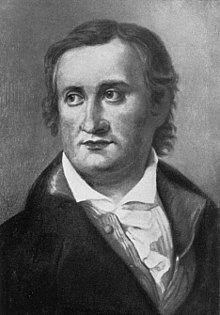
Back توماس يوهان سيبك Arabic Томас Іаган Зеебек Byelorussian Томас Йохан Зеебек Bulgarian Thomas Johann Seebeck Catalan Thomas Johann Seebeck Czech Thomas Johann Seebeck German Thomas Johann Seebeck Spanish Thomas Johann Seebeck Estonian Thomas Johann Seebeck Basque توماس یوهان سیبک Persian
Thomas Johann Seebeck | |
|---|---|
 | |
| Born | 9 April 1770 |
| Died | 10 December 1831 (aged 61) |
| Known for | Discovering the thermoelectric effect |
| Scientific career | |
| Fields | Physics |
Thomas Johann Seebeck (German: [ˈtoːmas ˈjoːhan ˈzeːbɛk]; 9 April 1770 – 10 December 1831) was a German physicist, who, in 1822, observed a relationship between heat and magnetism. Later, in 1823, Ørsted[who?] called this phenomenon the thermoelectric effect.
Seebeck was born in Reval (today Tallinn) to a wealthy Baltic German merchant family. He received a medical degree in 1802 from the University of Göttingen, but preferred to study physics. From 1821 to 1823, Seebeck performed a series of experiments trying to understand Ørsted's findings from 1820. During his experiments, he observed that a junction of dissimilar metals produces a deflexion on a magnetic needle (compass) when exposed to a temperature gradient. Because Ørsted had discovered that an electric current produces a deflexion on a compass transversal to the wire, Seebeck's results were interpreted as a thermoelectric effect.[2] This is now called the Peltier–Seebeck effect and is the basis of thermocouples and thermopiles.
- ^ George Theodore Dippold (1904). A Scientific German Reader. Ginn & Co.
- ^ Ørsted, Hans C. (1823). "New experiments by Dr. Seebeck on electromagnetic effects". Annales de chimie et de physique. 22: 199–201.